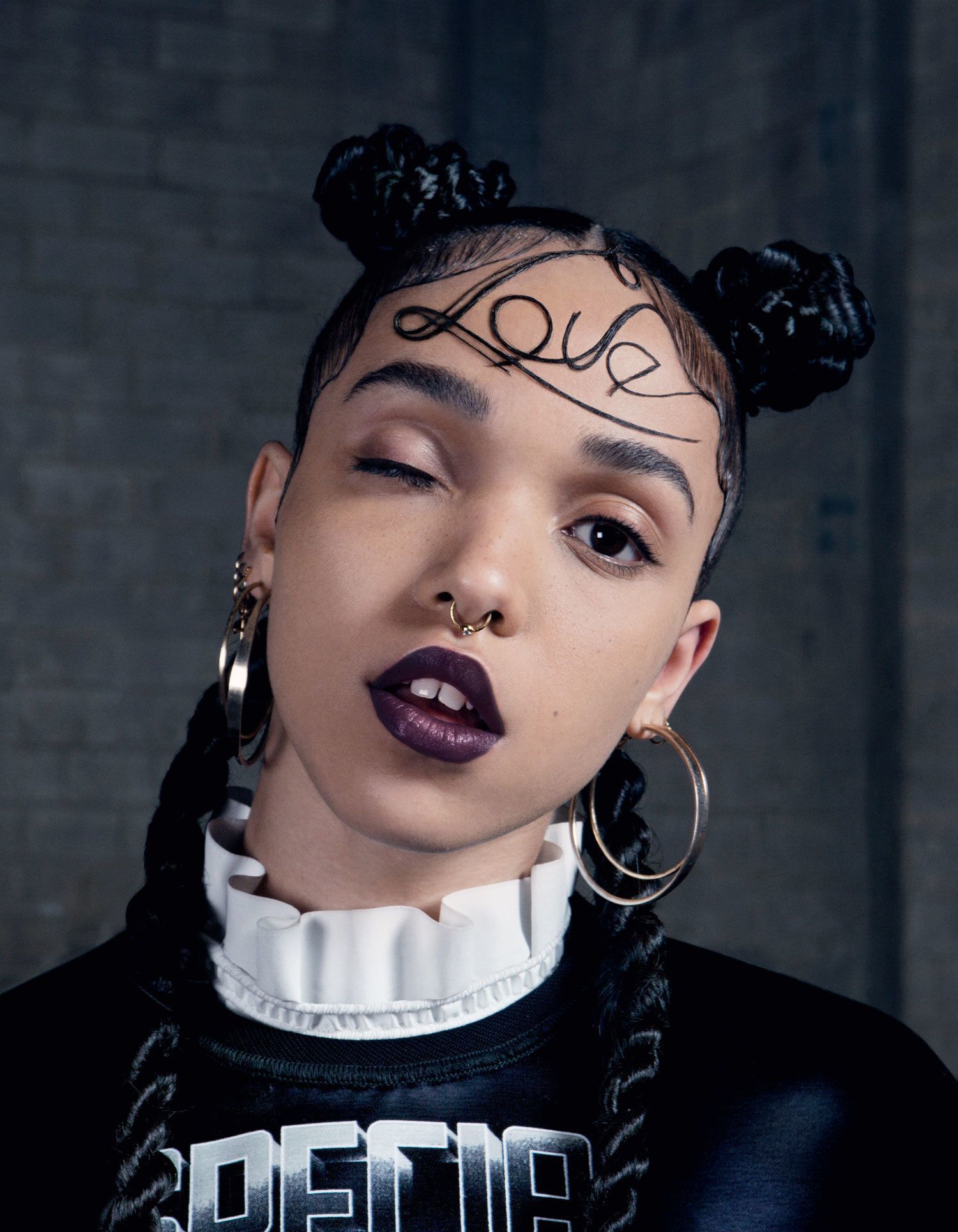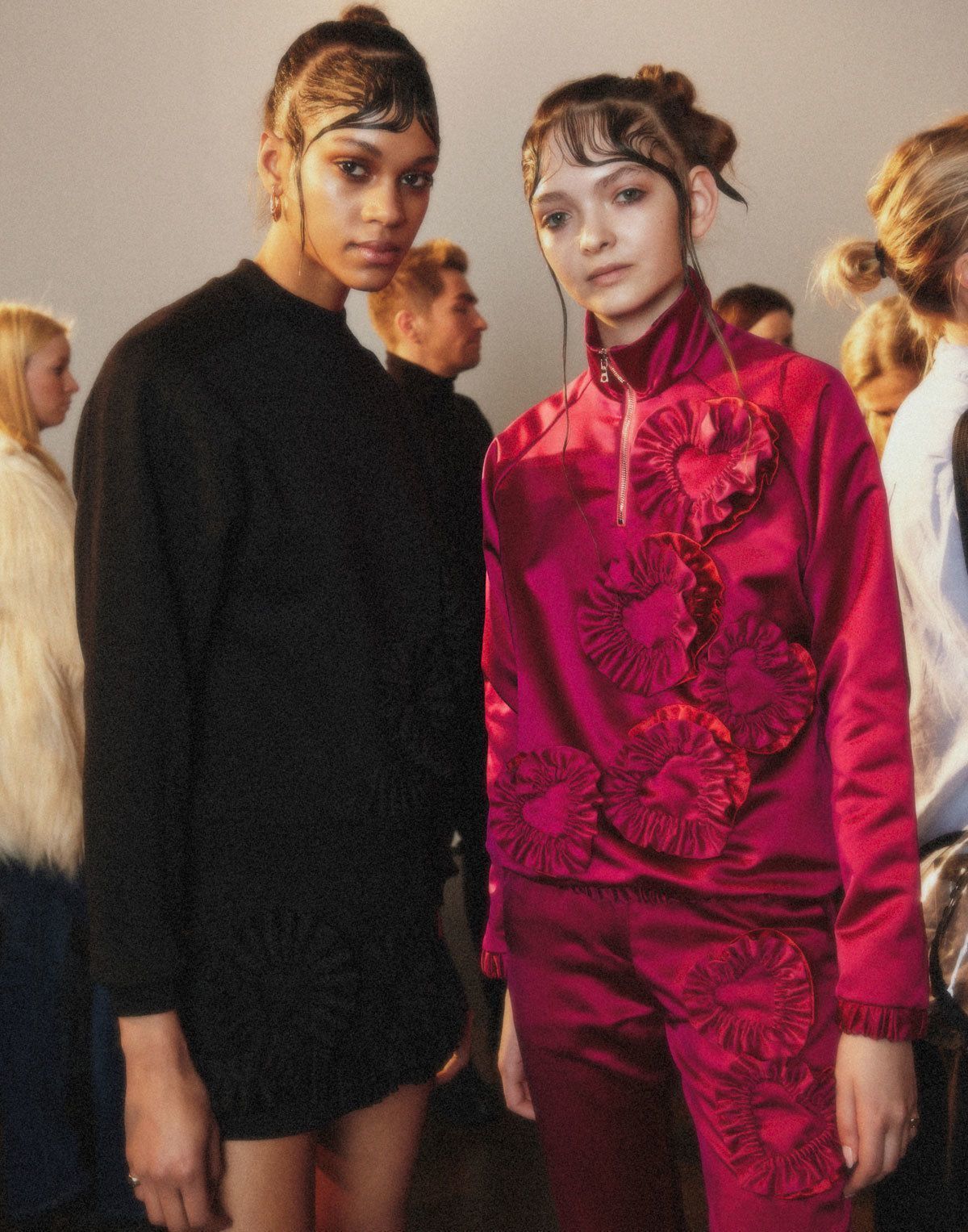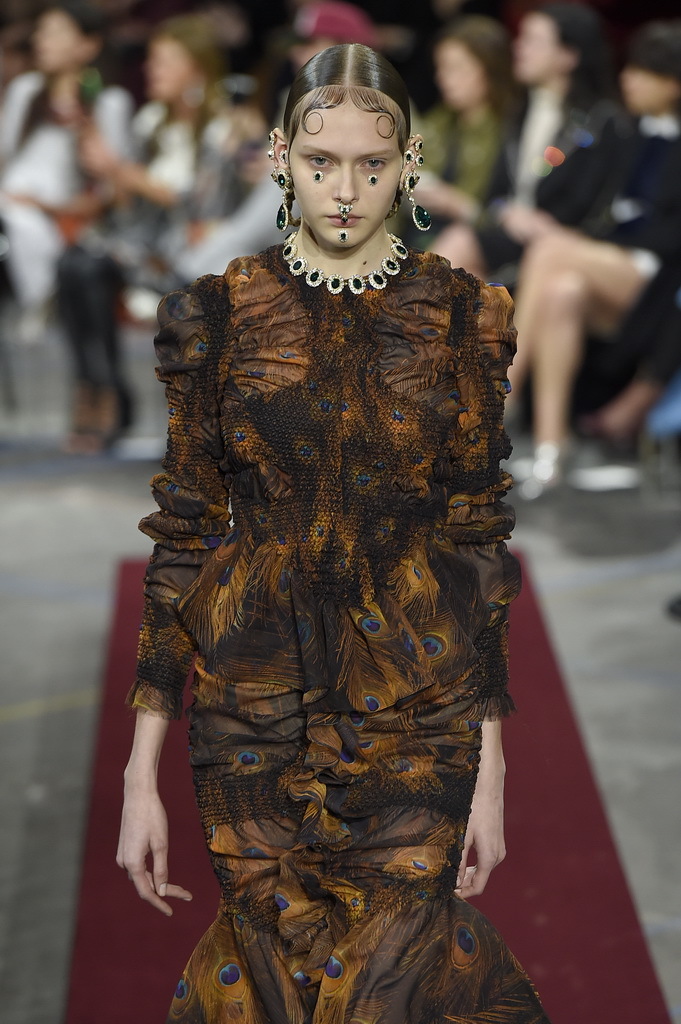What could sound less threatening or divisive than “baby hair”? But set aside all thoughts of soft flaxen wisps and the smell of Johnson’s baby shampoo. We’re talking about the slicked-down curls that stormed the runway at Givenchy yesterday. Allegedly, the look (combined with face-covering jewels and piercings) was so fierce that Jessica Chastain and Isabelle Huppert were clutching each other in the front row. Nearby, Katy Perry worked gelled waves and licks of her own — a matching look that, according to the same report, was just coincidence.
So why has styled baby hair been seen everywhere at the shows this month, from Caitlin Price in London to Givenchy in Paris to Katy Perry’s forehead? (It was felt even in the subtle wet-look waves escaping from the ponytails at Stella McCartney.) And, the real question: what does it mean that high fashion has adopted and translated a look born from traditionally black and Latina subcultures — from chola girls in Echo Park, say, and South London garage girls?

Since FKA Twigs appeared on the cover of i-D for The Just Kids Issue (Pre-Fall 2012), with the word “love” spelled out in twists of hair across her forehead, baby curls have been impossible to ignore, both in magazines and on the runway. In LOVE’s spring 2014 American Girl issue, Kendall Jenner sported a glossy wave of baby curls along her hairline. At DKNY for spring/summer 15, models walked the runway with intricate rippled fingers of hair arranged by stylist Eugene Souleiman.
The show notes at DKNY explained that the collection was an homage to the “multicolored, multicultural, multitasking” women of New York. And the baby curls, a reference to traditionally black and Latina hairstyles worn here by an ethnically diverse selection of models, fell in with that mission. On Twitter though, people took a different view. When Lucky Magazine described the hairstyle at DKNY as “slicked-down tendrils,” the online community @blackgirlnerds retweeted Lucky’s picture with the caption “The Appropriation of Baby Hair: Lucky Magazine Coins The Term ‘Slicked-down Tendrils.”
The complaint that fashion is taking something that doesn’t belong to it, and to which it has no right, is nothing new. But the crux of this particular debate has been what some see as the throwaway attempt of certain brands and celebrities to bring something “urban fabulous” (as one Twitter user termed it) to their aesthetic, without any understanding of context. “Privileged people want to borrow the “cool” of disenfranchised people of color, but don’t have to face any of the discrimination or marginalization that accompanies it,” parsed writer Julianne Escobedo Shepherd in a well-argued article on the appropriation of chola style in The Guardian last summer.
But is there a difference between referencing and reworking subcultural style codes and simply “appropriating” them? At Caitlin Price this season, hair stylist Tina Outen created one of the most extreme examples of high-fashion baby hair yet. The models, clad in Price’s glossy rosette-covered tracksuits, sported high twisted buns and gelled-down baby hair bangs that spread from temple to temple, then down in face-framing strands.

“We didn’t want it to be some idea of a ‘rude girl’ look,” says Outen of her conversation with Price. “We spoke about 90s garage girls, but we also used the movie Dune as a hair reference — we wanted to make it a bit sci-fi. The twisted knot was sort of like the headdress Chani wears, and I saw the curling baby hairs as being like the breathing apparatus.”
Similarly, at Givenchy, plastered-down baby hair was used to conjure the spirit of a subculture, while creating something new. “Victorian-chola girl,” is how Riccardo Tisci described his fall/winter 15 woman — her hair braided in strict ropes at the back and slicked-down in shiny Os at the front. This was not a gratuitous or uninformed appropriation. Tisci’s use of styled baby hair and the subcultural reference it made were key to his messaging and the very personal story of Latin gothica he wove with his clothes.
Going one step further, Outen considers that fashion’s current use of styled baby hair has, in some instances, become something entirely different from the subcultural style it once referenced. “Often, in the past, using gel was how you tamed hair that had been broken or damaged by chemical relaxers. It was a way to contain and control you look. Today though, it’s about face-framing and using your face in a studied way. [At Caitlin Price] we weren’t trying to do something retro. It was about finding something new.”
Done right, baby hair (like so many of fashion’s subcultural references) is not about lifting a subcultural trademark out of its context and cooing, “Isn’t this cool?” It’s about weaving that element together with other references to say something intelligent and new. And isn’t that what fashion’s all about?
Credits
Text Alice Newell-Hanson
Photography Mitchell Sams and Piczo
Twigs portrait Matthew Stone
Styling Matthew Josephs
[The Just Kids Issue, no. 320, Pre-Fall 12]
